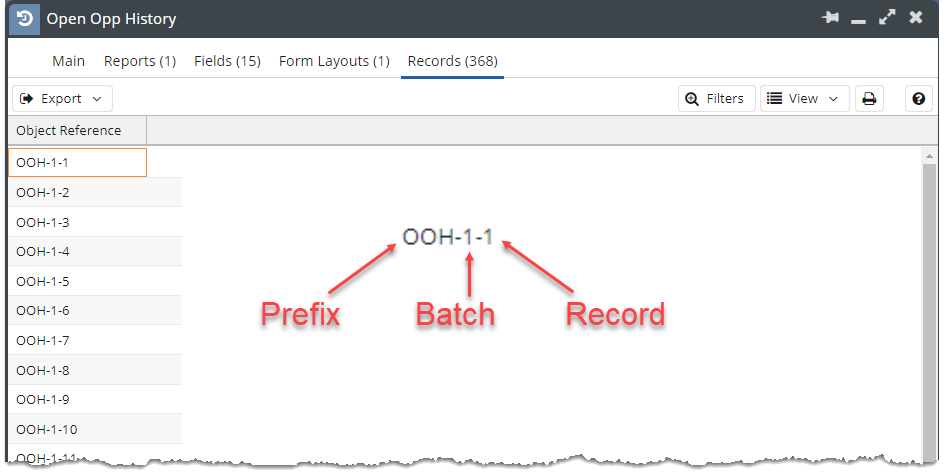Knowledgebase articles
- Welcome to the Knowledge Base
- Introduction
- Training
- Getting Started
- Preferences
- Activities
- Cases
- Importing Data
- Leads
- Marketing
- Introduction to Marketing
- Marketing Campaigns
- Mailing Lists
- Products
- Mailshots
- Upload Library
- Templates
- Event Management
- Compliance Records
- Force24
- Spotler Integration
- What is Spotler?
- Navigating your Spotler homepage
- GatorMail
- GatorLeads / Web Insights
- Tracking Code
- Setting up the Plugin
- Viewing Web Insights Data on your Form Layouts
- Domain Names and Online Activities
- Reporting incorrect Leads created through Web Insights
- Reporting on Web Insights data
- Using UTM Values
- Why aren’t Online Activities being created in the database?
- Why is GatorLeads recording online activities in a foreign language?
- GatorSurvey
- GatorWorkflow
- GatorPopup
- Opportunities
- Projects
- Integrations
- Mapping
- Electronic Signing Tools
- Creditsafe Integration
- Zapier
- Introduction to Zapier
- Available Triggers and Actions
- Linking your Workbooks Account to Zapier
- Setting up Zaps
- Posted Invoices to Xero Invoices
- Xero payments to Workbooks Tasks
- New Case to Google Drive folder
- New Case to Basecamp Project
- New Workbooks Case to JIRA Ticket
- Jira Issue to new Case
- 123FormBuilder Form Entry to Case
- Eventbrite Attendee to Sales Lead and Task
- Facebook Ad Leads to Sales Leads
- Wufoo Form Entry to Sales Lead
- Posted Credit Note to Task
- QuickBooks Online
- Survey Monkey responses to Tasks
- Multistep Zaps
- Email Integrations
- Event & Webinar Integration Tools
- GoToWebinar
- ON24
- Microsoft Office
- Outreach
- Installation
- Outreach Authentication
- Sync People to Outreach Prospects
- Sync Organisations to Outreach Accounts
- Sync Workbooks Opportunities to Outreach
- Sync Tasks/Activities from Workbooks to Outreach
- Sync Outreach Sequences to Workbooks
- Sync Outreach Sequence States to Workbooks
- Sync Outreach Sequence Step Numbers to Workbooks
- Sync Prospects/Accounts/Opportunities from Outreach to Workbooks
- Sync Outreach Tasks/Calls/Meetings to Workbooks
- Scribe/Workbooks Connector
- RingCentral
- Auditing
- Comments
- People & Organisations
- Reporting
- Introduction to Reporting
- Using Reports
- Introduction to Charts
- Exporting Reports
- Advanced Reporting
- Report Snapshots
- Dashboards
- Transaction Documents
- Introduction to Transaction Documents
- Displaying & Adding Transaction Documents
- Copying Transaction Documents
- Transaction Documents Fields Help
- Transaction Documents Line Items Help
- Printing & Sending Transaction Documents
- Managing Transaction Document Currencies
- Managing Transaction Document Statuses
- Setting a Blank Default Currency on Transaction Documents
- Credit Notes
- Customer Orders
- Invoices
- Quotations
- Supplier Orders
- Contract Management
- Sagelink
- Introduction to Transaction Documents
- Configuration
- Introduction to System Administration
- Users & Security
- Database
- Accounting
- Email Integrations
- Customisation
- Creating & Modifying Picklists
- Theme
- Record Types
- Creating Custom Fields
- Report-based Custom Fields
- Linked Fields & Reference Fields
- Record Templates
- Form Layouts
- Customising relationships between parties
- Opportunity Stages
- Custom Records
- Sign In Customisation
- Automation
- Contact Support
- Releases & Roadmap
Configuring a Snapshot
Snapshots are configured from within their Custom Record window across 5 tabs:

1. Main. From the main tab you can change information about the Snapshot such as the name, icon and description. You can also change both the Data Retention (how long each set of Snapshots is kept) as well as whether or not new fields are automatically added to the Snapshot record. Similar to processes in your Workbooks database, you can set a schedule for the Snapshot to run on. This will define how often each batch of Snapshot records are created so consider your retention setting when choosing an option.

2. Reports. Within the Reports tab, you can manage the data being imported into the Snapshot. Data from multiple Reports can be added at one time, provided it is configured correctly. Reports can be added via the Add Report button or removed via the ‘x‘ next to it’s row.

When adding a new Report it must be selected it by name and view. If you have multiple Reports contributing to the stored data it is recommended that a column is specified in each Report to uniquely identify rows. This will often be the ID of a main record being reported on.
3. Fields. Within the Fields tab, you can manage the fields currently being mapped from the Report(s) onto the Custom Record. If Automatically add fields has been ticked, all fields in the relevant Report will display here. Fields are created on the Custom Record of the relevant type in which they display in the Report. ID columns will be created as a DLI, allowing a user to open the relevant record directly from the Snapshot.

4. Form Layouts. Much as you can with other record types, you can manipulate the fields’ location on the resulting Snapshot form via Form Layouts. See our page here for more information on how to do this.

5. Records. The Records tab will show all Snapshot records of this type. From here any of the Snapshot records can be opened to display the data relating to that row at the time of Snapshot. Snapshot records will appear with a reference that shows both the batch and the individual record number within the batch.
